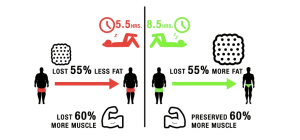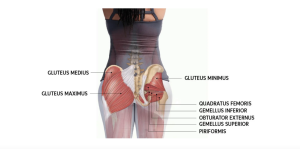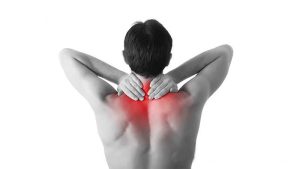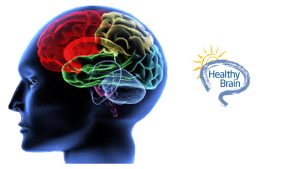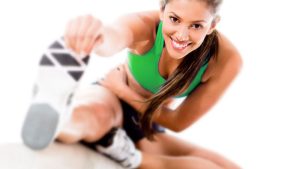As the proportion of older Australians is growing, it is important to discuss the topic of healthy ageing. In Australia, more and more people are living full and productive lives well into their 80s and 90s, therefore, a lifetime of good health enables older Australians to continue to contribute socially, culturally and economically to the wider community.
In 2016, 15% (3.7 million) Australians were aged over 65 and over and this proportion is projected to grow steadily over the coming decades. By 2056, it is projected there will be 8.7 million older Australians (22% of the population); by 2096, 12.8 million (25%) will be aged 65 years and over.
The importance of staying active – Healthy Ageing
Being physically active has important benefits for both physical and mental health, therefore, it’s important for older Australians to exercise. Aim for 30 minutes of moderate exercise on most, if not all, days of the week. Instead of exercising 30 minutes all at once, it can be done as three lots of ten minutes each day.
The benefits of regular physical activity include:
- Reducing the risk of many health problems including cardiovascular disease, diabetes, anxiety, depression, and musculoskeletal problems.
- It provides opportunities for social engagement.
- Aides in improving and maintaining fitness, strength, and balance.
Ways to stay active
Firstly, it’s important to remember that everyone’s fitness levels and physical abilities are different. Secondly, if you have been inactive or have health problems you may find you’re not as fit anymore. For that reason start slowly and build up gradually as doing some activity is better than doing none at all.
Try doing a range of activities to improve the following:
- Fitness – water exercises, swimming, dancing, brisk walking to keep your heart and lungs fit and healthy.
- Strength – lifting and carrying weights, climbing stairs, doing squats, and raising your legs to the side help maintain your muscle tone and bone density.
- Balance – reaching to the front and to the side, balancing on one foot or your toes with a chair for support. Tai chi also helps with stability.
- Flexibility – yoga and stretching exercises can keep you flexible.
For some, exercising alone can be challenging so it might be more enjoyable to get involved in community, team, or group activities. Try lawn bowls, golf, walking groups, or exercise classes. Likewise, day-to-day activities also count as physical activity. Hanging out the washing, carrying shopping, sweeping floors, and doing jobs in the garden are ways you can be active.
Nutrition – Healthy Ageing
As we get older our lifestyles and appetite can change and this affects the types and amounts of foods we eat. Also, a decreased appetite or a reduced ability to buy and prepare healthy foods means that many older people don’t get enough essential vitamins, minerals, and fibre. As a result, this contributes to a general feeling of being unwell and exacerbate some chronic illnesses.
Ways to improve nutrition
- Reduce salt intake as too much salt can increase the risk of high blood pressure and heart disease. Try to limit the intake of high salt foods such as cured meats, snack foods, and sauces.
- Drink more water as it supports many vital functions in the body including hydration, digestion, and blood volume. As we age we feel thirsty less often, so aim to drink at least six times a day. Drink more in warmer weather and if exercising.
- Limit saturated and trans fats such as pies, pastries, fried and battered foods as well as chips and chocolate. They are all high in saturated fats and consequently may contain dangerous trans fats.
- Alcohol does not provide any essential nutrients and is full of kilojoules, which can add up. On any given day, consume no more than two standard drinks to reduce the risk of alcohol-related disease.
- Vitamins and minerals play a role in deficiencies that are common in older people as they may eat less or have digestion issues due to illness or medication. Enjoy a variety of foods from the core food groups to get as many nutrients from foods as possible.
Bone health
Osteoporosis is characterized by a decrease in bone density, which increases the risk of fractures. Affecting older people, especially women after menopause, fractures of the hip, leg, and wrist are common.
Calcium, once lost from the bones, is difficult to replace. To protect yourself against osteoporosis it’s important to get enough calcium, fluoride, vitamin D as well as exercise.
Here are some tips for healthy bones:
- Eating calcium-rich foods like milk, yoghurt, cheese, canned salmon, or sardines. Women over 51 should consume four servings of dairy per day. Men aged 50-70 should consume two and a half serves. Men over 70 should aim for three and a half servings of dairy per day.
- Vitamin D is essential in helping build and maintain healthy bones and the best source is the sun. Depending on your skin type, location, and time of the year aim for 10 to 30 minutes of sun. This will help your body get the vitamin D is needed.
- Weight-bearing exercises such as walking or light weights also support bone health. Talk to your GP or health professional for advice on what exercises are right for you.
Mental and social wellbeing – Healthy Ageing
Healthy ageing involves so much more than just eating well and getting the right amount of exercise. There are huge benefits for remaining socially active and having contact with a broad range of people in our lives. Frequent socialisation is important in maintaining the quality of life. It helps with an individual’s perception of their health, loneliness, and general life satisfaction.
Social interaction is vital for our physical and mental health at any age. As a result, the immune system can also get a boost from the positivity derived from social interaction.
The following are some of the benefits of social interaction:
- Increased energy.
- Lowered blood pressure and stress hormones.
- (Possibly) reduced risk of Alzheimer’s.
- General improvement of mood.
- Increased energy and desire to be more physically active.
- Potentially reduced the risk of cardiovascular problems and arthritis.
- Mental stimulation.
Consider joining an exercise class, a book club, or an activity group. There is always the possibility of meeting new people and learning something new is a great way to remain social. Finally, for seniors who are still physically mobile, volunteering is a way to get out and about while feeling a sense of well-being through helping others.
Chiro & Sports Med
Our chiropractors at Chiro & Sports Med are committed to providing chiropractic solutions to address your unique needs, whether you are experiencing an irritated nerve, bulging disc, back pain, neck pain, knee pain, headaches, or even muscular tightness and tension. You may be searching for pain relief after an accident or experiencing an injury. Our mission is to help reduce or eliminate pain and to prevent future problems and injury. Above all, we are here to improve your quality of life, well-being, and your ability to live an active healthy lifestyle.
If you would like to make an appointment with one of the chiropractors at Chiro & Sports Med simply call our office on 9817 2005 and one of our friendly staff will organise an appointment for you.

